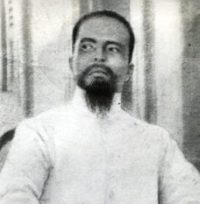It was a terrible day. From 6 in the morning the fighting began by sea and land. In the afternoon our forces were unable to continue the defense at Caloocan, where the grenades and incendiary bombs fell. Two fell directly on the church tower and confusion ensued. The forces retreated toward Tinajeros and Polo. Left behind when evening came were General Pantaleon García and Major Soriano.
Fully informed of this happening, the President left Malolos for Caloocan and Malabon ordering our forces to return and occupy these places; and if the enemy wanted to retake them, they should do so shedding their own blood in the attempt. The order brought renewed vigor among the troops. Caloocan was garrisoned anew as far as Navotas and Malabon.
The Director of War, Antonio Luna, was in the battlefield the whole Sunday afternoon, stopping the advance of the enemy with a small number of troops, thus showing his bravery and fearlessness on this occasion. Everybody agreed that he was worthy to be in the hierarchy of Division Generals who had displayed their insignia of distinction. This event won for him the general applause and an appointment as Defense Chief of the railroad line.
Five days later, the Americans occupied Caloocan after suffering many casualties. From then on, the line of defense extended along Tinajeros and Tuliajan and as far as Novaliches, where the enemy, suffering many casualties, doubted the possibiilty of breaking that line. They finally pushed the line owing to the fact that grenades were hurled from the fleet in the bay. Seeing the futility of continued resistance, our troops allowed the enemy to advance, but with sizable and numerous casualties, while they retreated to Calumpit and Baliuag to fortify the new line of defense.
Having taken the Tuliajan line, the Americans continued advancing with slight resistance. Malolos was occupied as far as the Bagbag River in Calumpit, where they were quartered for some time.
The Philippine Government, having lost the Tuliajan line to the enemy, evacuated Malolos and transferred to San Isidro, Nueva Ecija, where the Congress convened by Pedro A. Paterno dissolved the Mabini Cabinet and Paterno was called to form a new one. It must be noted that the session, in my humble opinion, was illegal; for, according to news, it was composed of fourteen members only, including their President. The majority of the members present were Mabini’s enemies. That session, therefore, which resulted in the downfall of the Mabini Cabinet, was unconstitutional.
Paterno, now in power with the support of his followers, proposed peace, accepting autonomy. But an unexpected move—a proposed coup d’etat—on the part of General Luna, who was in Cabanatuan, banished from everybody the idea of accepting autonomy; in turn, they became strong advocates of Independence.
